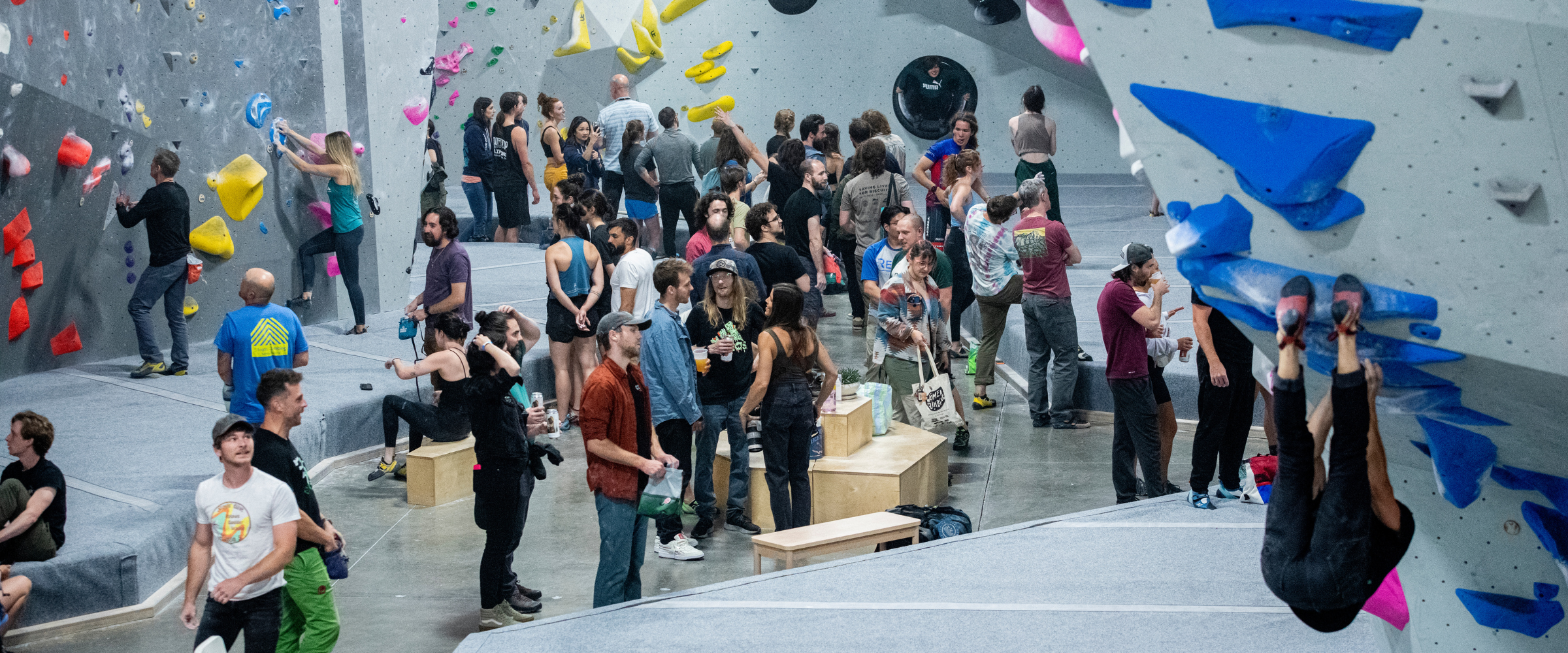Sharing Spaces in Indoor Climbing Gyms

Over the last few decades, indoor climbing gym facilities have evolved into spectacular spaces.
If a climber from the 1990s traveled to the future and stepped into even the most modest of our modern-day climbing gyms, they’d likely pass out at the sight of it. Despite facility improvements and huge increases in climbing surface square footage that facilities now provide, our community still struggles with the age-old social obstacle of sharing space.
Article At A Glance |
|
This is particularly true between two of the biggest user groups in our gyms, youth programs, and the general membership community.
Space sharing between youth programs and the broader membership community in climbing gyms has been a common point of friction in the world of indoor rock climbing, and it’s a challenge with no simple solutions. However, it should continue to be something we remain open about and willing to discuss as indoor rock climbing along with the demand for its spaces, continues to grow.
Youth program managers can take steps to alleviate tension in their gym spaces between these user groups. They can also instill transferable social skills that will help youth grow into outdoor climbers and adult community members.
The approach we will discuss here is based on teaching etiquette on sharing space. When the Headwall Group works with a climbing gym’s youth program, we always suggest that all aspects of all programs be mission-aligned and goal-driven.
A climbing etiquette approach to space sharing should be aligned with the mission of your gym community and should be tied to general climbing etiquette. Suppose we can identify the etiquette categories important to our programs, our gym community, and the greater climbing community. In that case, we can create explicit goals that improve the relationship between youth programs and the broader membership community. At the same time, we will be setting our participants up for success as they go out to other indoor climbing gyms or outdoors to the crags and boulders.
To determine which categories of climbing etiquette you want to focus on with your program, it can be helpful to start with common areas of friction between your programs and your members and determine what the problem is.
From there you can identify reasonable goals to aim toward. To demonstrate this, we will use a common example that we have seen many times to be a point of frustration among members. We will describe the issue and why it may be considered problematic from a social and climbing etiquette perspective, give an example of a related goal, and how a coach can use creative programming to reach the goal.
The practice we are going to look at is programming that requires exclusive use of a particular space. This occurs when youth programs reserve an entire zone of the bouldering area, a training board, a weight room, etc. at a particular time, excluding general members from that area.
Additionally, this practice goes against the common climbing ethic that crags and boulders are to be shared. Showing up first or being in a large group does not reserve a climber exclusive access to an area and it is important to be proactive about sharing and taking turns while climbing outside. Excluding members from certain areas of the gym runs the risk of teaching our young climbers the wrong lesson which they could take with them as they head outside or to another gym.
An example of a related goal we could work toward would be that youth programs will design programming that does not require exclusive use of space and will be proactive in sharing spaces in the gym. A coach can work toward this goal by implementing social skills lessons that teach their participants how to appropriately share climbing spaces.
As we discussed in the community building blog series, when we get members and youth programs interacting, we are helping build a strong community in our gyms. When members and youth programs use a space together, they have an opportunity to shape gym etiquette and gym culture together, hopefully leading to a more cohesive and inclusive social atmosphere overall. This approach models acceptable climbing etiquette for our youth participants and adult members, a skill that can be transferred to other climbing situations and environments.
While this is just one example, a climbing etiquette approach to space sharing can be applied to many common points of friction between programs and members. We can use this approach to teach principles of Leave No Trace, safety issues such as spatial awareness in dynamic environments, the social and environmental impacts of climbing in large groups, etc.
If we can identify what problem exists, we can then identify which category of climbing etiquette it is related to and create a goal for our program that both addresses the issue and aims to teach a transferable skill related to that category of etiquette.
The responsibility of maintaining a positive relationship between programs and members is not entirely on the programs. It’s a complicated social dynamic and all parties should be invested in finding cohesion.
But as program staff and managers, it is important to think about how you can apply solutions that are not only reactive to problems that arise but are proactive in creating the type of overall social atmosphere you feel would be ideal in your gyms.
We think that this climbing etiquette approach allows program managers to do just that. Please reach out if you’re interested in this topic and want to dive deeper!
What Did You Think?
The CWA is committed to providing content that is valuable, actionable, and fun to read. This is not the place for clickbait and incorrect information. Tell us what you think in our one-minute anonymous survey.
About the Headwall Group
 The Headwall Group was founded by Bix Firer and Pat Brehm. Bix Firer (MA, University of Chicago) is an Associate Professor of Outdoor Studies at Alaska Pacific University and has worked as a wilderness educator, trainer, facilitator, and experiential educator for over a decade.
The Headwall Group was founded by Bix Firer and Pat Brehm. Bix Firer (MA, University of Chicago) is an Associate Professor of Outdoor Studies at Alaska Pacific University and has worked as a wilderness educator, trainer, facilitator, and experiential educator for over a decade.
Pat Brehm works as a professional organizational trainer and has spent his career as a climbing coach, facilitator, and outdoor educator.
